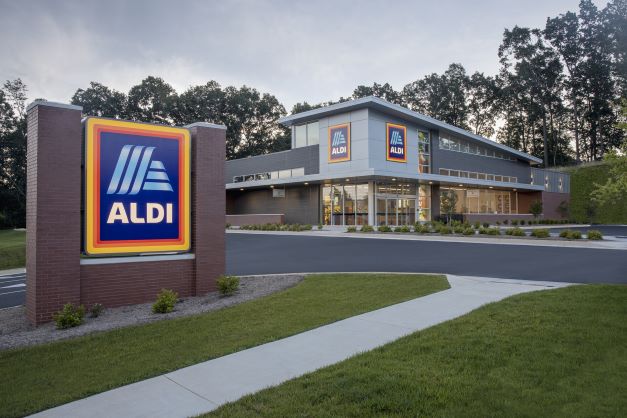Aldi appears to have quickly gained access to a trove of good store locations with its pending acquisition of the Winn-Dixie and Harveys Supermarket chains, analysts said.
Questions remain, however, about what the bare-bones discounter might do with the full-service stores it doesn’t convert to its own banner. One possibility might be to continue to operate them as a largely independent division within Aldi’s U.S. operations, backed by the world-class supply chain expertise Aldi brings to the table.
“The locations are very, very appealing to Aldi, but within those, there are a subset—probably 50 to 100 stores—that are profitable and successful serving their community,” said John Clear, director in the consumer retail group of global professional services firm Alvarez & Marsal.
Clear said he believes Aldi will likely retain key management personnel from Southeastern Grocers, the parent of Winn-Dixie and Harveys, to oversee a newly created division from a headquarters in Florida, with the support of some veteran Aldi management.
“They could keep the management structures in place, and then apply the Aldi know-how in the background,” said Clear, who is a former executive at Lidl, a rival of Aldi in both the U.S. and Europe.
Aldi’s expertise in private label could also help drive efficiencies in Winn-Dixie’s private-label program, Clear said. Although he doubted that Aldi’s extensive private-brand assortment—about 90 percent of Aldi’s product assortment is private label—would be introduced in Winn-Dixie stores, Aldi could integrate some of Winn-Dixie’s store brands into Aldi’s highly efficient private-label supply chain. Private-label manufacturers could simply apply Winn-Dixie’s labels to the same products during Aldi private-label production runs, for example.
“Aldi can take any private label and make it very efficient,” said Clear.
Winn-Dixie and Harveys currently offer the SE Grocers private-label assortment, which includes subsets offering premium, natural/organic, and value products under the Prestige, Naturally Better, and Essentials brands, respectively.
Most of the 400 stores that Aldi acquired, however, appear likely to be destined for conversion to the Aldi format. Most of these traditional supermarkets, with full-service meat departments, delis, bakeries, and other departments that Aldi lacks, are considerably larger than Aldi’s traditional stores. They could easily be remodeled into multiple smaller retail parcels, however, Clear explained.
When Lidl acquired the 27-unit Best Market chain in New York and New Jersey in 2018, that’s exactly what happened, he said. Lidl carved out 20,000-30,000 square feet for its own banner, then divided up the rest of the store into parcels that the company then sublet to other businesses, such as hairdressers or restaurants.
“I would expect Aldi to do something similar here as well,” said Clear.
Aldi stores are even smaller than Lidl stores in the U.S., and typically measure about 18,000-20,000 square feet, with 10,000-11,000 square feet of selling space inside. Winn-Dixie, meanwhile, operates stores that average 48,000 square feet, with some much larger than that. The Harveys supermarket locations, most of which are in Georgia, tend to be smaller—between 18,000 and 35,000 square feet—according to a Wikipedia entry on the banner.
Potential Distribution Hubs
Another possible use of some of the acquired Winn-Dixie locations is as smaller storage facilities for Aldi’s buy online, pickup in-store operations. Aldi has enjoyed success with curbside pickup since the service grew in popularity during the pandemic, Clear said, and the chain could potentially convert some Winn-Dixie locations into hubs that support quick distribution to individual Aldi stores in the area.
One analyst cited the potential efficiency of buying a group of well-sited stores rather than finding the right locations and building the stores from the ground up.
“Aldi is actively looking to expand, and targeting the Southeast, when market availability was at three percent and construction costs so high, made their building from the ground up very difficult right now,” Brandon Svec, director of retail analytics at CoStar Group, said in an interview with Benzinga. “This was a pure market-share play, and they gained 400 stores in one fell swoop.”
He added that there were no expectations that stores would be closed as a result of the acquisition.
Clear speculated that the acquisition could also impact how Florida market leader Publix approaches its operations in the region. If Aldi siphons off even a small percentage of market share from Publix, it could have negative repercussions on the Lakeland, Florida-based chain.
“If we were advising Publix, we would look at focusing on what is Publix really good at that Aldi doesn’t have, to make sure they maintain that customer who is so loyal to them,” said Clear.
He noted that if the pending Kroger-Albertsons merger is completed as planned, a large number of stores could become available in some East Coast markets, and Publix may be interested in buying some of those. An Aldi surge in Florida could force Publix to focus on its stores there while at the same time managing its growth further up the Eastern Seaboard.
“I think it’s important for Publix to double down on their full-service offering, their higher-end offering, their customer service—all the things they do well—to keep this encroachment at bay,” said Clear.
Publix could become more active in higher-end and specialty food categories as points of differentiation, he said, while at the same time providing good value with a focus on pricing and private label.
Related: Arby’s Owner to Buy Subway; Aldi to Acquire Winn-Dixie, Harveys Supermarket

